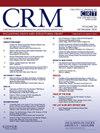心肌梗死患者的分流血流储备引导下的完全血运重建术与仅罪魁祸首的经皮冠状动脉介入治疗:随机对照试验的荟萃分析
IF 1.9
Q3 CARDIAC & CARDIOVASCULAR SYSTEMS
引用次数: 0
摘要
心肌梗死(MI)和多支冠状动脉疾病(CAD)患者的最佳血运重建策略仍然是一个研究和争论的领域。部分血流储备(FFR)引导下经皮冠状动脉介入治疗(PCI)的完全血运重建术(CR)已成为传统的纯罪魁祸首PCI的替代方案。目的:探讨ffr引导下的CR与单纯罪魁祸首PCI在心肌梗死合并多支血管CAD患者中的疗效。方法:我们系统地检索PubMed、Scopus和Cochrane Central数据库,以比较ffr引导下的CR与罪魁祸首仅PCI对心肌梗死合并多血管CAD患者的影响。结果包括全因死亡、心肌梗死、卒中和重复血运重建术,这些个体结果、心源性死亡、支架血栓形成(确定或可能)和造影剂诱导的急性肾损伤(CIAKI)。采用随机效应模型生成95%置信区间(ci)的风险比(rr)。结果:检索确定了5项随机对照试验,包括4618例患者,中位随访时间为3年。与单纯的罪魁祸首PCI相比,ffr引导下的CR与更少的复合不良事件相关(RR 0.73;95%可信区间0.57 - -0.92;p = 0.009),心源性死亡(RR 0.73;95%可信区间0.55 - -0.97;p = 0.03),重复血运重建术(RR 0.61;95%可信区间0.44 - -0.84;p = 0.003)。两种策略在全因死亡、心肌梗死、卒中、支架血栓形成和CIAKI方面相似。结论:ffr引导下的完全血运重建术在减少心肌梗死合并多血管CAD患者的复合不良事件、心源性死亡和重复血运重建术的需要方面优于单纯的PCI,而对心肌梗死复发率没有显著影响。社交媒体摘要:4618例患者荟萃分析:在MI /多血管CAD中,ffr引导下的完全血运重建术比罪魁祸首仅PCI更少产生复合不良事件、心脏死亡和重复血运重建术。本文章由计算机程序翻译,如有差异,请以英文原文为准。
Fractional flow reserve-guided complete revascularization versus culprit-only percutaneous coronary intervention in patients with myocardial infarction: A meta-analysis of randomized controlled trials
Introduction
The optimal revascularization strategy for patients with myocardial infarction (MI) and multivessel coronary artery disease (CAD) remains an area of research and debate. Fractional flow reserve (FFR)-guided complete revascularization (CR) by percutaneous coronary intervention (PCI) has emerged as an alternative to traditional culprit-only PCI.
Objective
To investigate the outcomes of FFR-guided CR versus culprit-only PCI in patients with MI and multivessel CAD.
Methods
We systematically searched PubMed, Scopus and Cochrane Central databases for randomized controlled trials (RCTs) comparing FFR-guided CR versus culprit-only PCI in MI patients with multivessel CAD. Outcomes included a composite of all-cause death, MI, stroke and repeat revascularization, these individual outcomes, cardiac death, stent thrombosis (definite or probable), and contrast-induced acute kidney injury (CIAKI). Random effects models were used to generate risk ratios (RRs) with 95 % confidence intervals (CIs).
Result
The search identified 5 RCTs including 4618 patients with a median follow-up duration of 3 years. Compared with culprit-only PCI, FFR-guided CR was associated with less composite adverse events (RR 0.73; 95%CI 0.57–0.92; p = 0.009), cardiac death (RR 0.73; 95%CI 0.55–0.97; p = 0.03), and repeat revascularization (RR 0.61; 95%CI 0.44–0.84; p = 0.003). Both strategies were similar in terms of all-cause death, MI, stroke, stent thrombosis, and CIAKI.
Conclusion
FFR-guided complete revascularization appears to be superior to culprit-only PCI in reducing composite adverse events, cardiac death, and the need for repeat revascularization in patients with MI and multivessel CAD without a significant impact on recurrent myocardial infarction rates.
Social media abstract
4618-patient meta-analysis: in MI w/ multivessel #CAD, #FFR-guided complete revascularization yields less composite adverse events, cardiac death & repeat revascularization than culprit-only #PCI.
求助全文
通过发布文献求助,成功后即可免费获取论文全文。
去求助
来源期刊

Cardiovascular Revascularization Medicine
CARDIAC & CARDIOVASCULAR SYSTEMS-
CiteScore
3.30
自引率
5.90%
发文量
687
审稿时长
36 days
期刊介绍:
Cardiovascular Revascularization Medicine (CRM) is an international and multidisciplinary journal that publishes original laboratory and clinical investigations related to revascularization therapies in cardiovascular medicine. Cardiovascular Revascularization Medicine publishes articles related to preclinical work and molecular interventions, including angiogenesis, cell therapy, pharmacological interventions, restenosis management, and prevention, including experiments conducted in human subjects, in laboratory animals, and in vitro. Specific areas of interest include percutaneous angioplasty in coronary and peripheral arteries, intervention in structural heart disease, cardiovascular surgery, etc.
 求助内容:
求助内容: 应助结果提醒方式:
应助结果提醒方式:


